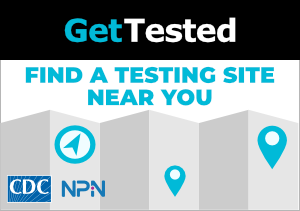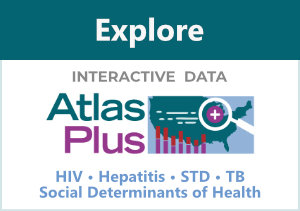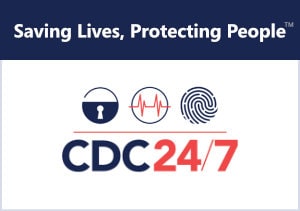LGBTQ+ Youth Programs-At-A-Glance
Societal factors such as bullying, violence, and discrimination heighten health risks for anyone. However, lesbian, gay, bisexual, transgender, and questioning (LGBTQ)* Youth experience elevated risk and associated negative health and mental health outcomes. Recognizing these serious health risks, CDC works with national, state, and local partners to address the health, education, and safety needs of LGBTQ+ Youth.
* Variations of this acronym are used throughout the webpage to reflect relevant populations. Many studies consider lesbian, gay, and bisexual youth but do not include transgender and questioning youth.
Youth Risk Behavior (YRBS) – Data Collection Analysis
CDC funds education and health agencies in states, territories, and large urban school districts to conduct the Youth Risk Behavior Survey. The YRBS monitors health behaviors of U.S. high school students. Starting in 2015, the national YRBS questionnaire and the standard YRBS questionnaire (the starting point for the state, territorial, and large urban school district questionnaires) included questions about sexual identity and gender of sexual contacts. These questions generate data that enable those working with youth to better understand the health and safety risks among sexual minority youth1; specifically data were collected about gay, lesbian, and bisexual (LGB) youth. These data inform changes to prevention priorities. The Morbidity and Mortality Weekly Report, “Sexual Identity, Sex of Sexual Contacts, and Health-related Behaviors Among Students in Grades 9-12—United States and Selected Sites, 2015. ” includes results from the 2015 national survey (conducted among more than 15,000 students in grades 9-12) plus results from 25 state surveys and 19 large urban school district surveys. The report documents the higher rates at which LGB students reported experiencing many health risks, substantially higher levels of physical and sexual violence, and bullying than other students.
School Health Profiles and the School Health Policies and Practices Study, CDC’s two largest surveillance systems that measure school health policies and practices, assess school health policies and practices relevant to LGBT students, including:
- Existence of genders & sexualities alliance networks (GSAs) or similar student organizations in schools
- Identification of safe spaces for LGBT students
- Prohibition of harassment and bullying
- Provision of health and mental health services to LGBT students
- Professional development and training for school staff about the needs of LGBT students
- Inclusion of LGBT-related topics in sex education curricula
- Classroom teaching about sexual orientation
- Referrals to health and mental health service providers experienced in serving LGBT students
State and Local Prevention
CDC provides funding and technical assistance to partners in 18 states, the District of Columbia, and 17 large urban school districts to help implement effective policies and practices to reduce sexual risk behaviors among youth. These programs focus increasingly on LGBT Youth as part of their HIV, STD, and pregnancy prevention activities.
Examples of program activities include:
- Providing training for district and school staff to ensure that health curricula are inclusive of and relevant to LGBT students
- Supporting schools in establishing GSAs and safe and supportive environments for LGBT Youth
- Linking schools to community organizations that provide sexual health services for LGBT Youth
- Developing resources to help school staff understand the special concerns and needs of LGBT Youth
- Collecting data on risk behaviors among LGB Youth as part of the Youth Risk Behavior Survey
In 2016, state and local education agencies funded by CDC reported specific activities to address LGBTQ+ Youth. The following are examples:
As part of the San Francisco Unified School District’s outreach to reduce HIV transmission among black and Latino adolescent sexual minority males (ASMM), the district’s priority high schools organize and host Young Men’s Health Groups. These groups are co-facilitated by one staff member from a community-based organization (CBO) and one staff member from the school’s Wellness Center. The groups meet for 10 sessions each and address topics such as media literacy, healthy masculinity, dating and hooking up, gender and body image, LGBTQ identity and allyship, and HIV testing. During 2015 and 2016, groups were held at eight different schools. Forty-five young men at priority schools completed the Young Men’s Health Group during these two years. Participants in these health groups showed significant increases in school connectedness, sexual health knowledge, and intention to reduce sexual health risks. After completing the groups, the participants were more likely to say they knew where to access condoms, that they respected people with different sexual orientations, and that they thought that someone at their school cared about them.
In Chicago Public Schools, the Office of Student Health and Wellness (OSHW) collaborated with the Office of Safety and Security and three partner organizations to implement a three-hour professional development (PD) session for the district’s security officers. The PD session aimed to build capacity for officers to create safe and supportive environments for LGBTQ students. A train-the-trainer model was used; six Safety Managers led the PD session after completing a two-hour training. To reach more than 1,300 security officers, the PD session was offered through 10 sessions in just one day. One OSHW or partner organization staff member attended each session to act as a content expert and ensure that sessions were accurate and culturally competent. Qualitative feedback from training participants suggests that the security officers found the training meaningful and impactful.
The Rhode Island Department of Elementary and Secondary Education developed and disseminated a guidance document, Guidance for Rhode Island Schools on Transgender and Gender Nonconforming Students. The guidance was developed in partnership with the statewide School Health Advisory Council (SHAC) and other stakeholders to ensure safe and supportive environments for all youth in schools. The guidance document contains pertinent information on federal and state laws, as well as best practice information, to help guide local policy and practice. The guidance document was approved by the Board of Education and disseminated to all public school districts and charter schools statewide.
In partnership with the American Psychological Association, the Wisconsin Department of Public Instruction and a collaborating community-based organization, the Gay Straight Alliance for Safe Schools, hosted a training in Milwaukee, Wisconsin, for school professionals. The training, Promoting Family Support to Prevent Risk and Build Healthy Futures for LGBT Students, was facilitated by the director of the Family Acceptance Project at San Francisco State University. Forty-three school professionals participated in the all-day training. Throughout the training, the director discussed key findings, resources, and evidence-based family intervention strategies that had been developed to help ethnically and religiously diverse families support LGBT Youth, reduce health risks, and promote student well-being in the context of families, cultures, and faith communities. Training participants learned strategies to engage families with LGBT students, role-played how to have empathetic conversations with families, discussed ideas about how to increase parent and family engagement within schools, and developed action steps about how they would apply the training in school activities, resources, and services when they returned to their school communities.
Young Men Who Have Sex with Men (YMSM) Project
CDC provides funding and support, through a 5-year cooperative agreement for the Young Men Who Have Sex with Men (YMSM) Project, to three local education agencies and a national non-profit organization. These organizations are funded to conduct innovative, school-centered activities to prevent HIV among black and Latino adolescent sexual minority males (ages 13-19), a group at disproportionately high risk for HIV. Recipients of the competitive funding are the School Board of Broward County, Los Angeles Unified School District, San Francisco Unified School District, and Advocates for Youth.
Goal
Reduce HIV and other STDs among black and Latino young men who have sex with men (YMSM) through school and community-based partnerships by:
- Increasing the number who are tested and treated for HIV and other STDs
- Decreasing sexual risk behaviors
- Reducing absenteeism and school drop-out
Core Strategies
- Implement or expand HIV and other STD testing and treatment in schools and school-based health centers
- Increase collaboration in order to support referrals to HIV and other STD testing, treatment, and evidence-based educational interventions
- Develop systems in schools to support student referrals to HIV and other STD testing and treatment
- Assess state and district education policies and their implementation related to HIV and other STD testing, treatment, and prevention
- Promote safe school and school-based health center environments
- Provide evidence-based education interventions tailored for black and Latino YMSM
- Implement social marketing that promotes the core strategies
Program Evaluation
CDC is supporting evaluation of this 5-year project designed to reduce HIV and other STDs among African American/black2 and Hispanic/Latino3 young men who have sex with men (YMSM), 13-19 years of age. Initial evaluation activities centered on gaining a better understanding of the experiences of these adolescents, particularly related to sexual health services. This first stage of the evaluation was designed to obtain information that would guide specific program work in these services. Findings focused on YMSM students’ experiences in school; their willingness to talk to school staff about topics such as safety, sexual orientation, relationships, and health services; and their experiences with, and interest in, sexual health services both within and outside of schools. The second stage of this evaluation focused on collecting baseline data. Follow-up data will also be collected. Basic evaluation activities are taking place in all three participating school districts; more in-depth evaluation activities are being implemented in a single district. Key outcomes of interest include HIV and STD testing among YMSM, numbers of referrals to testing and related services from school staff, and changes in the school environment for sexual minority youth.
Additional Funding
CDC also funds selected state and local education agencies to help school districts and schools implement effective policies and practices to reduce sexual risk behaviors among youth, including youth at disproportionate risk (such as open lesbian, gay, bisexual, and transgender (LGBT) Youth, especially sexual minority males), through funding opportunity announcements such as Promoting Adolescent Health Through School-Based HIV/STD Prevention and School-Based Surveillance. Funded agencies are required to report to CDC performance and process measures reflective of their specific work in addressing the needs of sexual minority youth.
Collaboration with National Nongovernmental Organizations (NGOs)
CDC provides funding and technical assistance to six national nongovernmental organizations (NGOs) to build the capacity of school districts and schools to meet the HIV/STD prevention needs of a selected group of youth at disproportionate risk―including LGBT youth. These NGOs focus their capacity-building activities around different approach areas.
These NGOs collaborate with other partners to support policies that better meet the mental and sexual health needs of LGBT youth.
- Those who identify as gay, lesbian, or bisexual, or who have sexual contact with persons of the same or both sexes.
- African American/black: Referred to as black in this Web page content.
- Hispanics/Latinos can be of any race.


